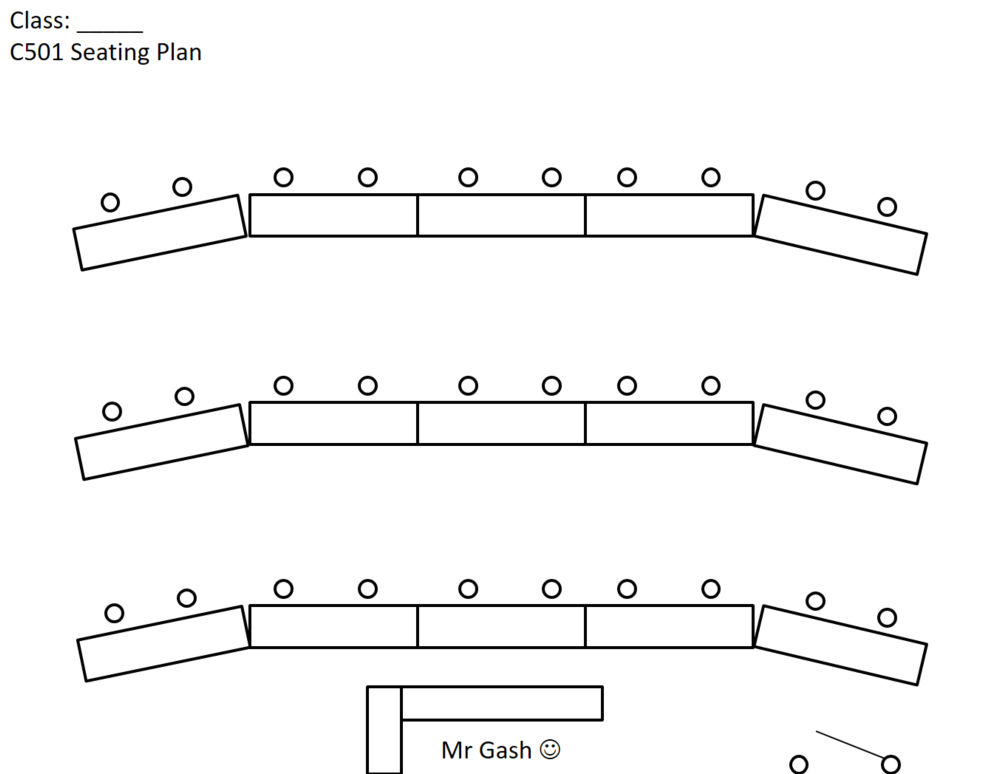Abraham Maslow, an American psychologist, first published his paper on the Hierarchy of Needs of human beings in 1943. This work suggests that we can only tend to a higher level of needs once a lower level of need has been satisfied (1). For example, he suggested that we cannot expect someone to worry about friendship groups if they have yet to secure adequate food and shelter. Whilst his original works never contained any kind of visualization, they have since been represented many times in the form of a pyramid (and we know that all good things come in the form of pyramids).

I have been a Head of Subject / Faculty for nearly a decade. In that time I have observed 100’s of lessons, and popped-in to countless others. Over the years the feedback I have given staff has been wide and varied but will often fall into certain categories akin to a hierarchy of need. More recently I have been convinced that actually, this hierarchy should be considered when formulating any kind of feedback to a colleague. (Some feedback and subsequent actions must be prioritized.) Allow me to elaborate whilst framing this in a rather crude Maslovian way.
“Level 1” Physiological needs – The room.
Before even thinking about questioning, resourcing, behaviour etc. a certain set of critical and logistical issues need to be considered:
1 – How are the desks arranged? In my view, rows are best. Further to this, a set of strategically placed gaps to allow more fluid teacher circulation around the room would be ideal. I also consider the filed of view with regards to my pupils. In my own classroom (lab) I turn the desks at the ends of each row in slightly so to increase the field of view for those pupils.

2 – Seating plan. I am completely unapologetic and non-negotiable when it comes to seating plans. I check the pupil passport (this is what we call our pupil specific SEND plans in my school) and ensure those pupils who need to be sat near the front, back, edges etc., are well positioned for their needs. I then will seat pupils girl / boy as far as possible (again, being sensitive not to assume gender), before checking my plans with a previous teacher or head of year. I fully expect my teaching staff to do the same for Y7-11 and will look for this as part of my initial checks in lessons.
“Level 2” Safety needs – Routines.
Most schools these days have a set routine for lesson starts and lesson ends (you can read more on my views on the former here). Once the configuration of a room and its inhabitants are secured, the next step is checking that routines are adhered to. This may seem draconian to some, I would argue they are critical for our teachers and pupils alike. From lining up at the door, to checking for equipment and answering the register politely, routines are everything in terms of establishing the right conditions for positive behavior for learning.
Now Maslow never claimed that each level of need acts distinctly and alone, and I do not claim that to be true here either in terms of lessons. He did say that a level will “dominate” (1) in the thinking of an individual. Likewise certain themes for lesson feedback should dominate in order to have the greatest impact on the individual moving forwards. The brain is a complex organ with many things going on at once and the same can be said of a lesson in any subject! Below is an alternative graphic of Maslow’s Hierarchy which better captures the overlapping nature of the needs.

“Level 3” Love and Belonging – Behaviour.
I think it is rather apt that the 3rd level of our tour of lesson feedback ties looking at behaviour management to ‘Love and Belonging’. It is my view that behaviour management is the single most critical component of effective teaching practice in many schools in the UK, so getting it right is something all staff should be supported on. These are the main areas I look for:
- Use of voice / words. A teacher’s voice is one of their most powerful weapons. A calm, clear, assertive voice can often offset many problems before they occur. I believe all staff should record their own voice in lesson at least once and reflect on the playback (be mindful of your safeguarding protocols here – seek guidance from your school). As well as being clear, calm, and assertive, I am always keen to hear how economical staff are with their words. Are their instructions clear and to the point? Or do they result in a raft of questions and/or an off task behaviour? (Adam Boxer wrote a cracker on this here.) In my department we have done a lot of work this year on FLMOP (Front Load Means of Participation – for more on this check this post out) which has helped my staff immensely (with thanks to my fabulous Lead Practitioner, Michael Seddon). So much so that we are now all “FLMOP-ing” our instructions when we deliver staff CPL! How we use our words is as important as how we use our voice.
- Position and circulation. Pastore’s Perch and the 3:30:30 rule are fantastic strategies / frameworks for positioning and circulation (for more on this check this post from Fahim Rahman).
- Calm and consistent application of policy. In my school we have what is a quite typical level system. The pupils recive some sort of verbal or non-verbal reminder of their behaviour, prior to a formal warning and then sanctions. Our staff are advised to calmly indicate to the pupils which stage they are at. A clear delivery of these stages is far more effective than a “right that’s it, that’s your warning!” from an unsettled teacher.
- Thank you. Whether is “killing it with kindness” or modelling what we expect to see. Staff will, in my experience, get further with the pupils if they behave in a way that is respectful.
“Level 4” – Esteem – Resourcing and Exposition.
Ok so the room is well laid out, the routines are strong, behaviour is will managed. Now we can focus on feeding back on more nuanced and subject specific aspects of lessons. These can be almost infinite in how they present themselves so here I will briefly touch upon 4 aspects of resourcing and exposition that I feel can effectively move staff on in their development.
- Visualizer. It is amazing that in this day and age staff will still turn their back to the class to give an explanation. A graphics tablet or visualizer allows the teacher to provide said explanation without the need to turn their backs. It also provides more opportunities for engagement with the pupils via questioning and opportunities for metacognition (an example of my use of the visualizer can be read here).
- PowerPoints. These are not everybody’s cup of tea but, in my view, they still serve a valuable purpose. In my department we have many staff still in the early stages of their careers and also teaching out of specialism. So having a bank of resources, created and stored centrally, allows that member of staff think about their explanations during their PPA rather than creating another resource.
- Preparing questions. It is apparent when a teacher has thought carefully about a line of questioning and also when it has been done on the fly. The latter isn’t always a bad thing, I want to see innovation, creativity, and bravery in my teaching staff. However the former always trumps all. Planning for a lesson should include careful thought into what questions the teacher wishes to task the pupils. Getting the pupils to think harder, for longer and on the correct topics, is a skill teachers should prioritize.
- Scaffolds. Has the teacher planned the right levels of support for the lesson. Do some pupils require a structure strip to guide some extended writing? Was the practical delivered in the correct manner? e.g. Slow Practical or integrated instructions? (Read more on my views on successful practical work here.)
“Level 5” Self-Actualization – Enhancing practice.
So the teacher has the room set up prefect, the lesson is well resourced, behaviour is under control (or at least handled skillfully), and the routines are flying! Now we can focus our feedback on two areas. Questioning and Assessment.
I am completely obsessed with mini-whiteboards (MWB’s). I speak of my use of them in my lessons in a more extended post here should you wish to read it (I know I have linked a lot in this post already!) Needless to say there is so much you can do with MWB’s to enhance questioning, assessment, manage behaviour, avoid pupil’s opting out, and drive up energy levels in the classroom. I have yet to see a lesson in which I haven’t thought “oh, if they had just used MWB’s here…” However if the behaviour is not right, or other routines are not yet strong, feeding back on MWB’s could be folly.
Questioning is incredibly difficult to master. There is sooooo much written in terms of techniques, frequency, and question types, that it could be it’s very own blogpost. However, much like MWB’s, if the other aspects of a lesson require tweaking, it is worthwhile feeding back on those areas and supporting the teacher in those improvements prior to focusing on questioning. Wait time, Cold-call, and Right-is-right, all have an aspect of behaviour management integrated into them, so introducing them at one of the other “levels” could prove useful. In my experience it is worth considering waiting until other aspects of a teachers craft have been secured. (i.e. worry about “cold-call” when you are successfully perching and entry/exit routines are strong!)
Closing comments.
I highly doubt that when Abraham Maslow published his hierarchy in the 1940’s, that he would have even dreamed a lowly Physics teacher from Northern England would be using it to frame the important aspects of lesson feedback in secondary schools! But here I am!
In truth, these levels of feedback are a blur, and we cannot ignore one for the sake of the other. But if the recipient of the feedback is likely to “dominate” their thoughts onto one area, then there is most definitely value is considering carefully which aspect we choose to feedback on first.
Finally I wish to acknowledge my wonderful colleague Graham Warner. It is my almost daily dialogue with him that has inspired this post. Without his input and support, my thinking would not be where it is today.
Thanks for stopping by!
References:
1. Wiki/Maslow – https://en.wikipedia.org/wiki/Maslow%27s_hierarchy_of_needs
(Accessed 15th July 2023)
2. Simply Psychology – https://www.simplypsychology.org/maslow.html
(Accessed 15th July 2023)
3. Philipp Guttmann – Own work, CC BY-SA 4.0, https://commons.wikimedia.org/w/index.php?curid=52306030 – https://en.wikipedia.org/wiki/Maslow%27s_hierarchy_of_needs
(Accessed 15th July 2023)

